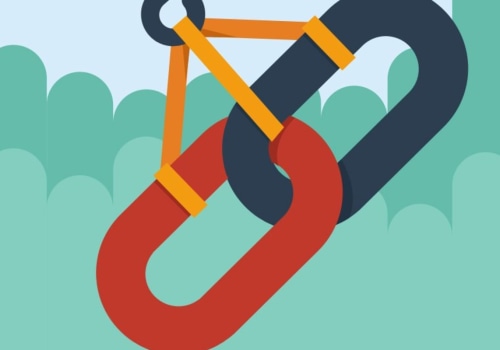Search engine optimization is an essential part of any website's success. One key part of SEO is understanding and effectively using anchor text in link building. Anchor text is the clickable text of a link that helps search engines understand the context of the page it is linking to. It can also have an impact on rankings, as search engines interpret anchor text as a signal of relevance.
In this guide, we will explore how to use anchor text effectively in SEO and link building to maximize the impact it has on your website's rankings and visibility.
Anchor text
is a type of HTML element used to link one page to another. It is usually displayed as a hyperlink with a specific phrase or keyword that describes the link’s destination. When used correctly, anchor text can help search engines better understand the content of a webpage and improve the visibility of a website. It can also provide readers with a more enjoyable experience while navigating a website.In this guide, we’ll cover everything you need to know about using anchor text effectively, including understanding anchor text, best practices for implementation, and more. Anchor text is an important element of SEO and link building because it helps search engines understand the content of a page. By using keywords in anchor text, search engines can better determine the relevance of a page to particular queries and serve up more relevant results. This helps improve the visibility of websites and drive more traffic to them. When it comes to using anchor text effectively, it’s important to understand the importance of keywords. Anchor text should include keywords that are relevant to the page you are linking to.
This will help search engines understand the content of the page and serve up more relevant results. Additionally, using keywords in anchor text also helps readers understand where they will be taken if they click on the link. It’s also important to use anchor text in a way that is natural and not overly optimized. Over-optimizing anchor text by using too many keywords can be seen as suspicious by search engines and can even result in penalties. Instead, use anchor text that reads naturally and contains keywords that are relevant to the page you’re linking to. When it comes to best practices for using anchor text, there are a few key points to keep in mind.
First, try to use descriptive anchor text that accurately describes the page you are linking to. This will help both search engines and readers understand what they will find if they click on the link. Second, avoid using generic phrases such as “click here” or “read more” as anchor text. These phrases don’t give any information about the destination page and can appear spammy to search engines. Finally, it’s important to avoid keyword stuffing when using anchor text.
As mentioned previously, over-optimizing anchor text can be seen as suspicious by search engines and may result in penalties. Instead, use keywords sparingly and focus on using descriptive phrases that accurately describe the destination page. Using anchor text incorrectly can have negative effects on SEO and link building efforts. Over-optimizing anchor text or using too many generic phrases can look suspicious to search engines and may result in penalties. Additionally, using irrelevant keywords or phrases can confuse search engines and readers alike, resulting in fewer clicks on your links. To avoid these pitfalls, it’s important to use descriptive anchor text that accurately describes the destination page.
Additionally, avoid keyword stuffing and focus on using natural phrases that make sense for your content. By following these best practices, you can ensure that your anchor text is being used effectively and helping improve your SEO and link building efforts.
Common Mistakes to Avoid
When using anchor text, it is important to avoid common mistakes that can damage a website’s SEO and link building efforts. These mistakes include keyword stuffing, over-optimizing anchor text, failing to vary anchor texts, and more. Keyword stuffing is a practice of using too many keywords in an attempt to artificially increase the ranking of a page.This practice is considered a violation of Google’s Webmaster Guidelines and can result in a website being penalized or even removed from search results. Anchor text should be used to accurately reflect the content of a page, not to manipulate search engine rankings. Over-optimizing anchor text is another common mistake that should be avoided. This involves using the same anchor text for multiple links on a page, which can give the impression that the page is trying to manipulate search engine rankings.
It is important to vary the anchor text used for different links so that it accurately reflects the content of each page. Not varying anchor texts is also a mistake to avoid. This involves using the same anchor text for all links on a page, which can make it appear as though the page is trying to manipulate search engine rankings. Using different anchor texts for different links allows search engines to more accurately understand the content of each page and provides readers with a better experience.
In summary, when using anchor text it is important to avoid common mistakes such as keyword stuffing, over-optimizing anchor text, and not varying anchor texts. Doing so will help ensure that your website remains in good standing with search engines and provides readers with a more enjoyable experience.
Best Practices for Using Anchor Text
When it comes to using anchor text effectively, there are a few best practices to keep in mind. First and foremost, it's important to use natural language when crafting anchor text. Avoiding keyword stuffing is key.Try to include words that accurately describe the content of the page you're linking to, while also appealing to readers. Additionally, it's important to use a variety of anchor texts. Different types of anchor texts can be used depending on the context of the link. For example, branded anchor texts like your company name or product name can be used to help build awareness for your brand. Exact match anchor texts such as specific keywords can be used when targeting a specific keyword for SEO purposes. You should also avoid over-optimizing by using too many exact match anchor texts.
A healthy mix of anchor texts should be used in order to appear natural. This can include using partial match, related terms, and other variations. Finally, keep in mind that Google also considers the relevancy of the page that the link is coming from when analyzing anchor texts. Links from relevant pages will generally have more value than those from irrelevant pages. By following these best practices, you'll be able to use anchor text effectively and get the most out of your link building efforts.
What is Anchor Text?
Anchor text is a term used to refer to the clickable words or phrases used in a hyperlink. It is an essential element of SEO and link building, because it helps search engines understand the content of a page and provides readers with a more enjoyable experience.Anchor text is typically blue, underlined, and slightly larger than the surrounding text. When clicked, it takes the user to a different page. The type of anchor text used can have an impact on how well a page performs in search engine results pages (SERPs). For example, using keywords as anchor text can help search engines know what the page is about and make sure it appears for relevant searches.
Examples of different types of anchor texts include:
- Exact match anchor text: These are phrases that match the target keyword exactly. For example, if your target keyword is “SEO best practices”, your exact match anchor text could be “SEO best practices”.
- Partial match anchor text: These are phrases that include the target keyword but also add additional words to it. For example, if your target keyword is “SEO best practices”, your partial match anchor text could be “learn more about SEO best practices”.
- Brand anchor text: These are phrases that include the name of your brand or website. For example, if your brand name is “MySite”, your brand anchor text could be “Visit MySite now!”.
- Generic anchor text: These are phrases that don’t contain any keywords.
For example, you could use “click here” or “learn more” as generic anchor text.
By following these guidelines and avoiding common mistakes, you will be able to use anchor text effectively to boost your SEO and link building efforts.






